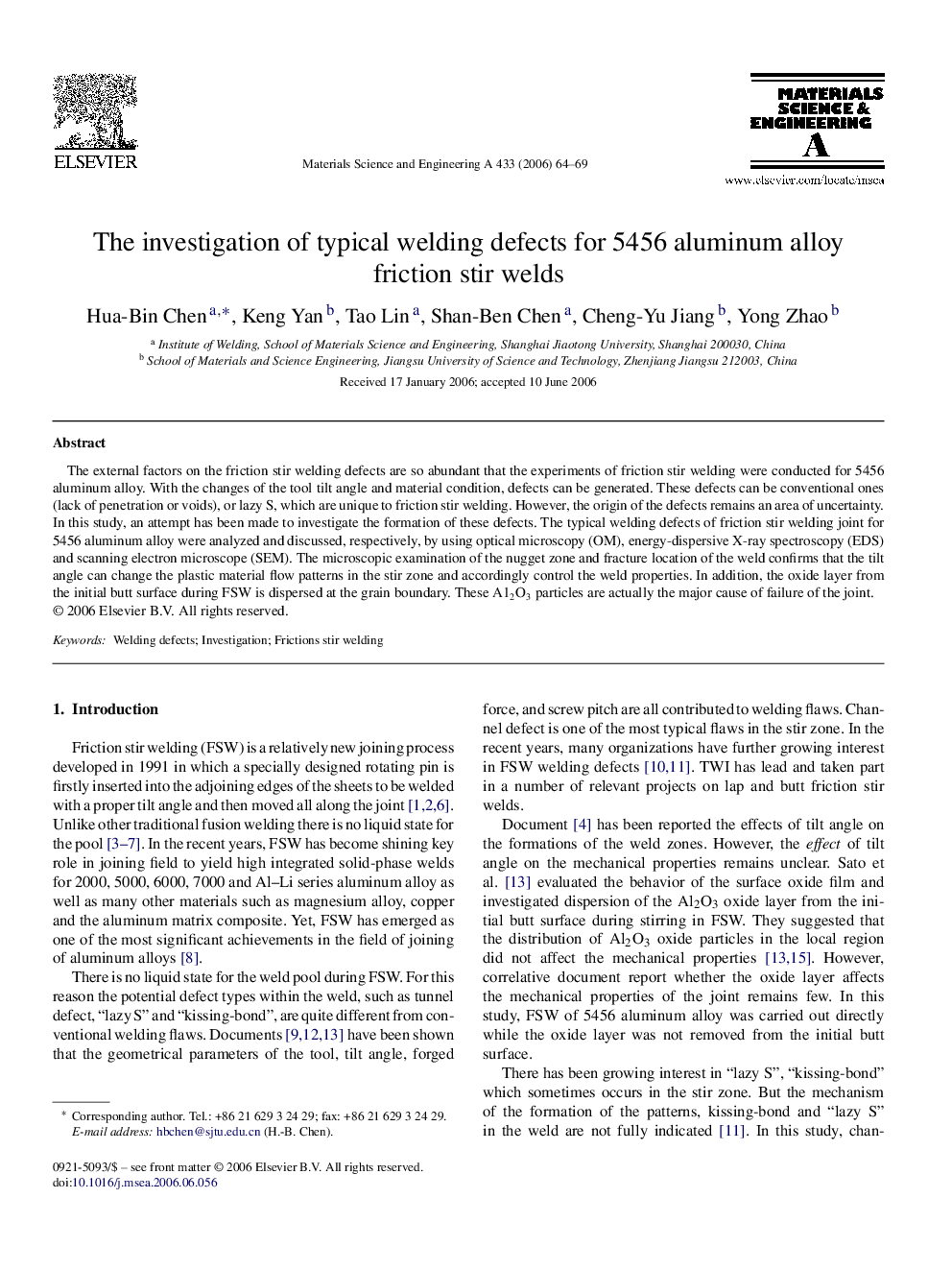| Article ID | Journal | Published Year | Pages | File Type |
|---|---|---|---|---|
| 1585207 | Materials Science and Engineering: A | 2006 | 6 Pages |
The external factors on the friction stir welding defects are so abundant that the experiments of friction stir welding were conducted for 5456 aluminum alloy. With the changes of the tool tilt angle and material condition, defects can be generated. These defects can be conventional ones (lack of penetration or voids), or lazy S, which are unique to friction stir welding. However, the origin of the defects remains an area of uncertainty. In this study, an attempt has been made to investigate the formation of these defects. The typical welding defects of friction stir welding joint for 5456 aluminum alloy were analyzed and discussed, respectively, by using optical microscopy (OM), energy-dispersive X-ray spectroscopy (EDS) and scanning electron microscope (SEM). The microscopic examination of the nugget zone and fracture location of the weld confirms that the tilt angle can change the plastic material flow patterns in the stir zone and accordingly control the weld properties. In addition, the oxide layer from the initial butt surface during FSW is dispersed at the grain boundary. These A12O3 particles are actually the major cause of failure of the joint.
